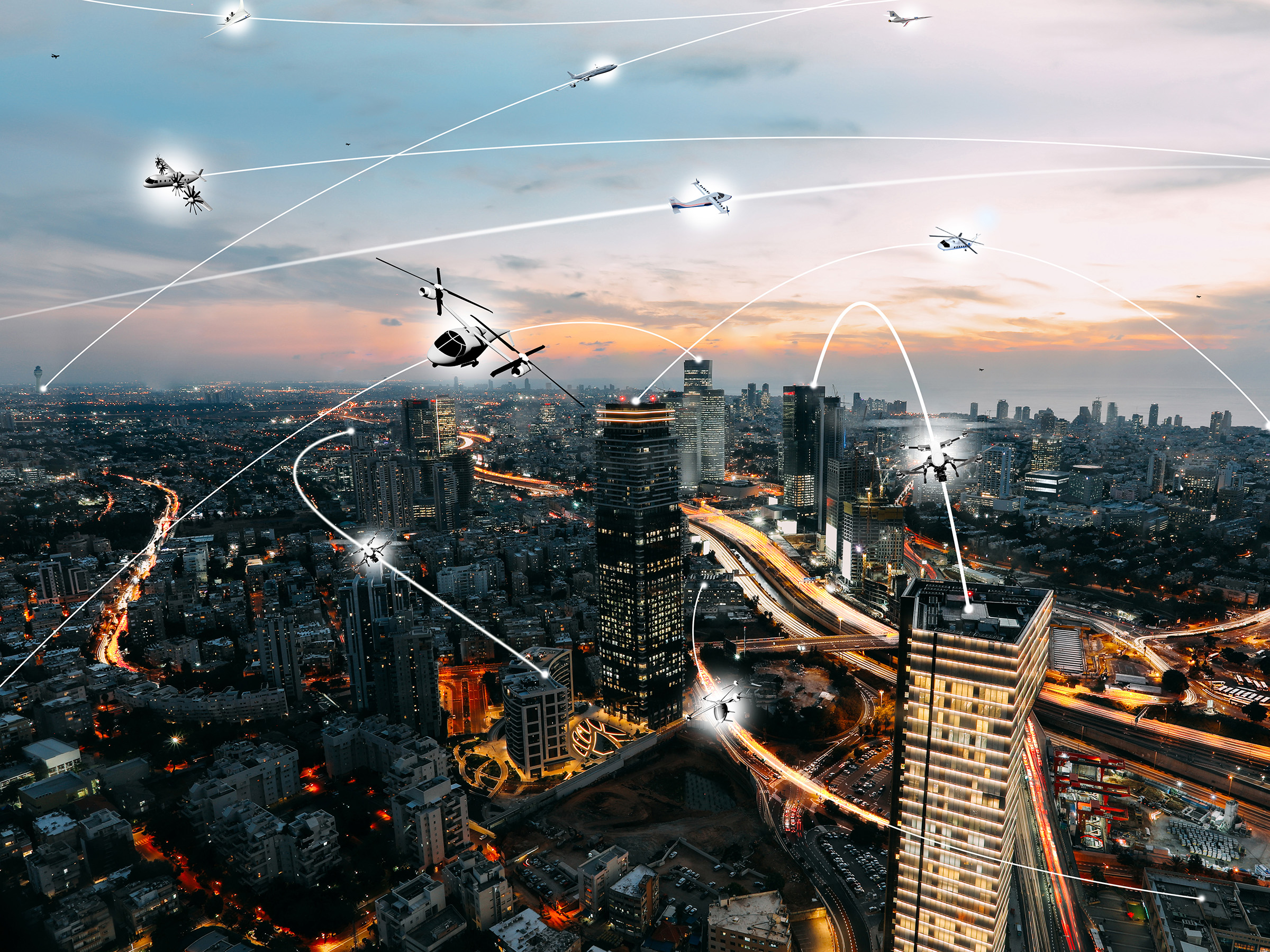Urban Air Mobility (UAM): In the bustling metropolises of the world, where traffic congestion is a daily reality and commute times seem to stretch endlessly, a new mode of transportation is poised to take to the skies and transform urban mobility as we know it. Once the stuff of science fiction, is rapidly becoming a tangible reality, promising to revolutionize the way we navigate our cities and communities.
At its core, UAM refers to the use of electric vertical takeoff and landing (eVTOL) aircraft and autonomous flying vehicles to provide on-demand aerial transportation services within urban environments. These futuristic aircraft, resembling a cross between a helicopter and a drone, have the ability to take off and land vertically, eliminating the need for traditional runways and allowing them to navigate the tight confines of urban landscapes with ease.
One of the most compelling aspects of UAM is its potential to alleviate the congestion and gridlock that plague many urban centers around the world. By taking to the skies, UAM vehicles can bypass traffic-choked streets and reach their destinations in a fraction of the time it would take by traditional means. This not only saves commuters valuable time but also reduces carbon emissions and pollution associated with conventional ground transportation.
Moreover, UAM has the potential to democratize access to transportation, providing convenient and affordable mobility options for residents of underserved communities and areas with limited access to public transit. By offering on-demand aerial ridesharing services, Urban Air Mobility can bridge the gap between neighborhoods and connect people to jobs, education, healthcare, and other essential services more efficiently than ever before.

But perhaps the most exciting aspect of UAM is the prospect of unlocking new realms of creativity and innovation in urban design and city planning. With the ability to travel swiftly and directly between rooftops and designated vertiports, UAM could reshape the way we conceive of urban spaces, encouraging vertical development and mixed-use zoning that maximizes efficiency and sustainability.
Of course, realizing the full potential of UAM will require overcoming numerous technical, regulatory, and societal challenges. From developing safe and reliable eVTOL aircraft to navigating complex airspace regulations and ensuring public acceptance and trust, there are many hurdles to clear on the path to widespread adoption of UAM.
Nevertheless, the momentum behind UAM is undeniable, with major companies and startups investing billions of dollars in research, development, and testing of UAM vehicles and infrastructure. Governments and regulatory agencies are also taking notice, working to establish frameworks and standards to safely integrate UAM into existing airspace and transportation networks.
As we look to the future, the promise of UAM is clear: a world where the sky is not just the limit, but a new frontier for urban mobility and connectivity. With UAM, the dream of flying cars and aerial taxis may soon become a reality, ushering in a new era of transportation that is faster, cleaner, and more accessible than ever before.
If you enjoyed this read, check out our other posts.














What do you think?
Show comments / Leave a comment